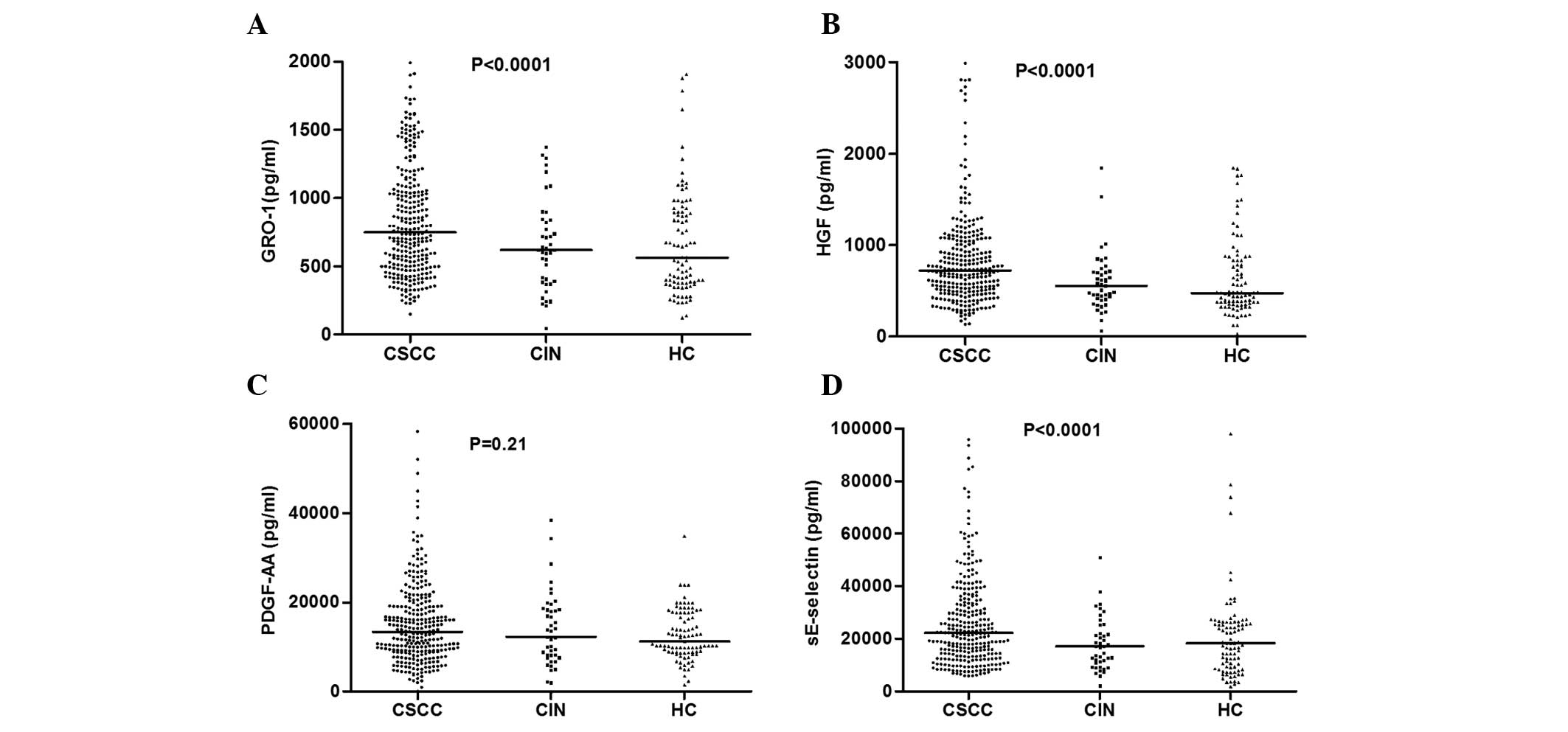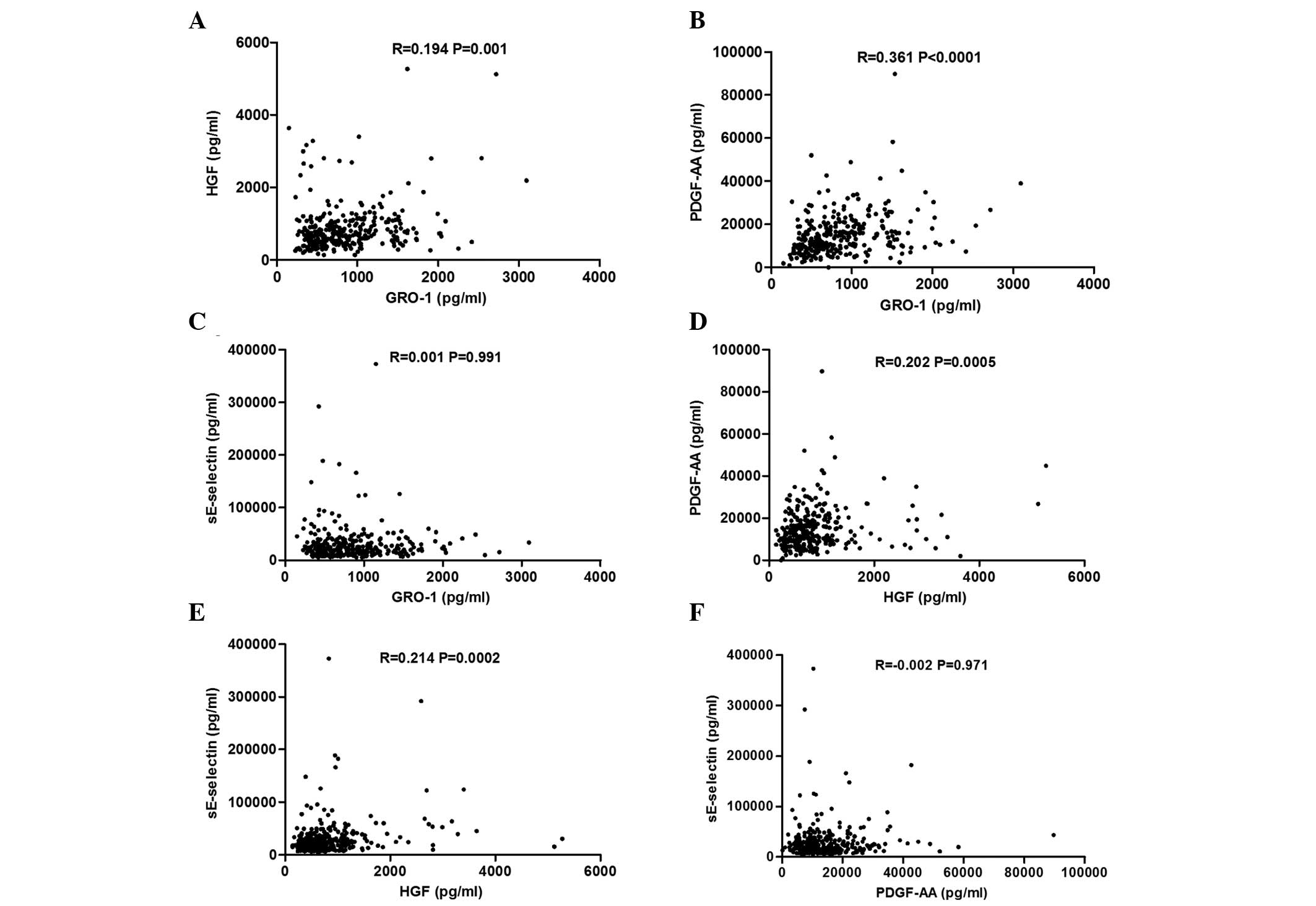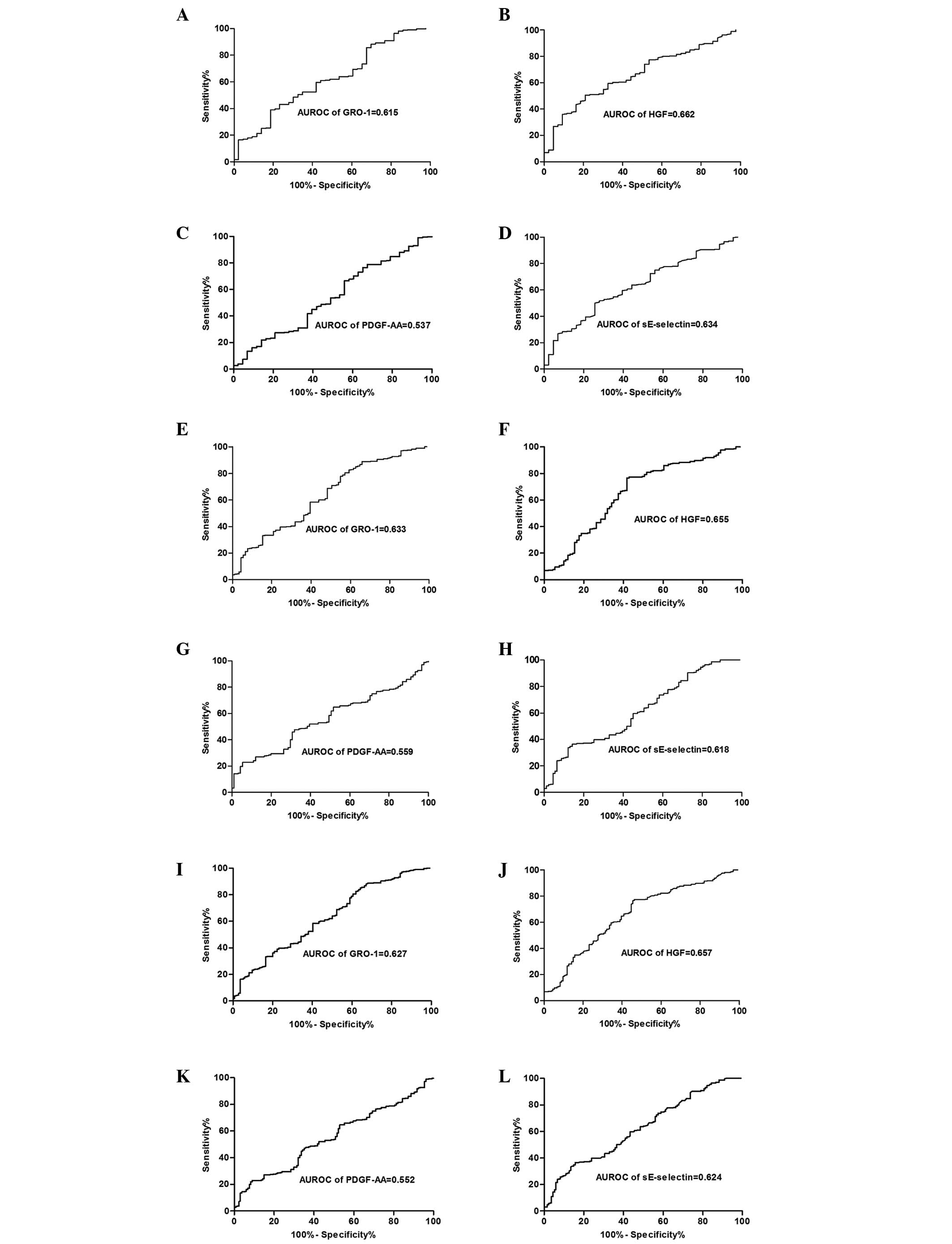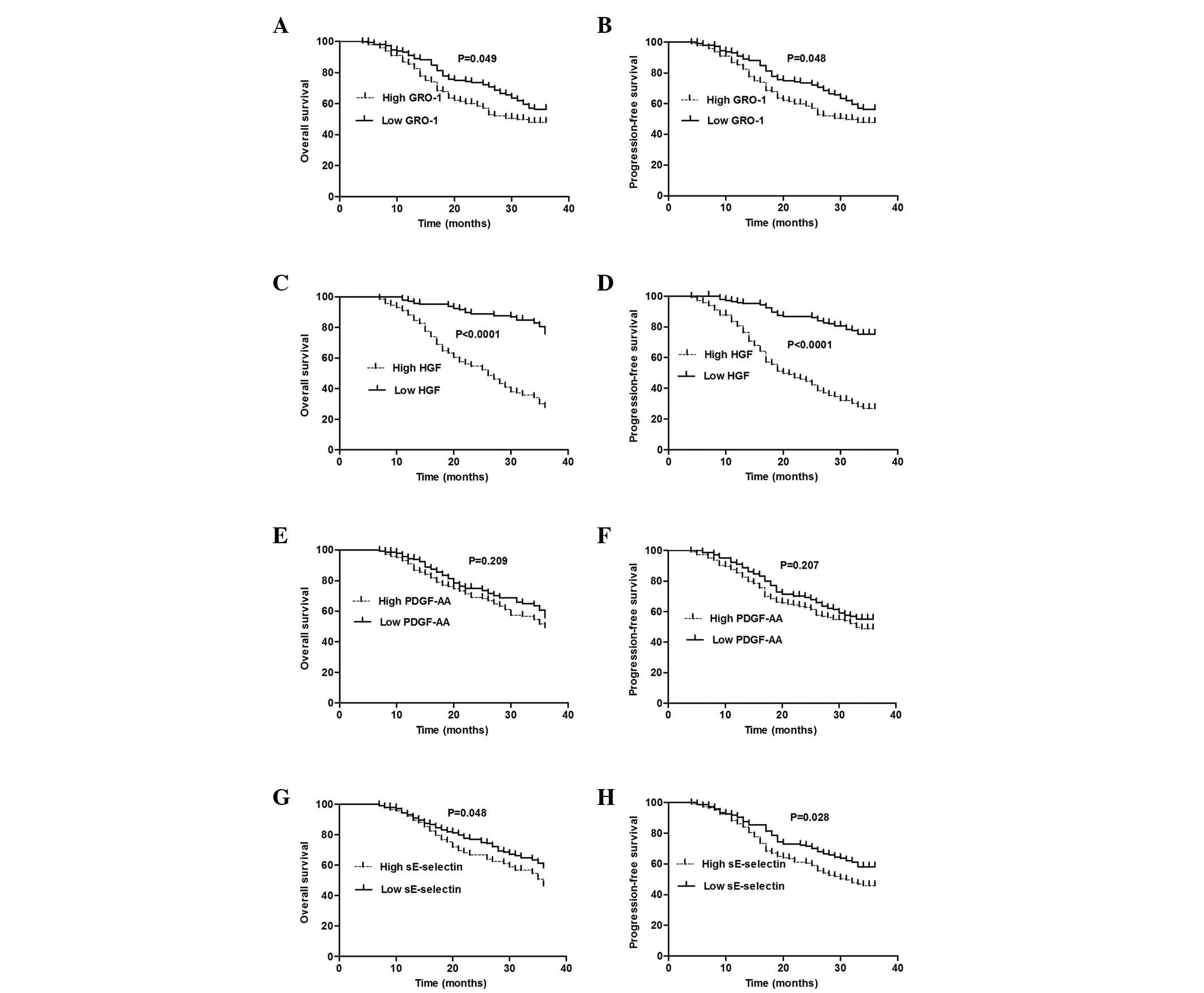|
1
|
Ferlay J, Shin HR, Bray F, et al:
Estimates of worldwide burden of cancer in 2008: GLOBOCAN 2008. Int
J Cancer. 127:2893–2917. 2010. View Article : Google Scholar : PubMed/NCBI
|
|
2
|
Wang SS, Sherman ME, Hildesheim A, Lacey
JV Jr and Devesa S: Cervical adenocarcinoma and squamous cell
carcinoma incidence trends among white women and black women in the
United States for 1976–2000. Cancer. 100:1035–1044. 2004.PubMed/NCBI
|
|
3
|
Walboomers JM, Jacobs MV, Manos MM, et al:
Human papillomavirus is a necessary cause of invasive cervical
cancer worldwide. J Pathol. 189:12–19. 1999. View Article : Google Scholar : PubMed/NCBI
|
|
4
|
Castellsagué X: Natural history and
epidemiology of HPV infection and cervical cancer. Gynecol Oncol.
110:S4–S7. 2008.
|
|
5
|
Bao YP, Li N, Smith JS and Qiao YL; ACCPAB
members. Human papillomavirus type distribution in women from Asia:
a meta-analysis. Int J Gynecol Cancer. 18:71–79. 2008. View Article : Google Scholar : PubMed/NCBI
|
|
6
|
Schwartz SM, Daling JR, Shera KA, et al:
Human papillomavirus and prognosis of invasive cervical cancer: a
population-based study. J Clin Oncol. 19:1906–1915. 2001.PubMed/NCBI
|
|
7
|
Kang WD, Kim CH, Cho MK, et al: HPV-18 is
a poor prognostic factor, unlike the HPV viral load, in patients
with stage IB-IIA cervical cancer undergoing radical hysterectomy.
Gynecol Oncol. 121:546–550. 2011. View Article : Google Scholar
|
|
8
|
Riou G, Favre M, Jeannel D, Bourhis J, Le
Doussal V and Orth G: Association between poor prognosis in
early-stage invasive cervical carcinomas and non-detection of HPV
DNA. Lancet. 335:1171–1174. 1990. View Article : Google Scholar : PubMed/NCBI
|
|
9
|
Higgins GD1, Davy M, Roder D, et al:
Increased age and mortality associated with cervical carcinomas
negative for human papillomavirus RNA. Lancet. 338:910–913. 1991.
View Article : Google Scholar : PubMed/NCBI
|
|
10
|
Barreto CL, Martins DB, de Lima Filho JL
and Magalhães V: Detection of human Papillomavirus in biopsies of
patients with cervical cancer, and its association with prognosis.
Arch Gynecol Obstet. 288:643–648. 2013. View Article : Google Scholar : PubMed/NCBI
|
|
11
|
Belperio JA, Keane MP, Arenberg DA, et al:
CXC chemokines in angiogenesis. J Leukocyte Biol. 68:1–8. 2000.
|
|
12
|
Anisowicz A, Bardwell L and Sager R:
Constitutive overexpression of a growth-regulated gene in
transformed Chinese hamster and human cells. Proc Natl Acad Sci
USA. 84:7188–7192. 1987. View Article : Google Scholar : PubMed/NCBI
|
|
13
|
Ogata H, Sekikawa A, Yamagishi H, et al:
GROα promotes invasion of colorectal cancer cells. Oncol Rep.
24:1479–1486. 2010.
|
|
14
|
Jung JJ, Noh S, Jeung HC, et al: Chemokine
growth-regulated oncogene 1 as a putative biomarker for gastric
cancer progression. Cancer Sci. 101:2200–2206. 2010. View Article : Google Scholar : PubMed/NCBI
|
|
15
|
Nakamura T, Nawa K and Ichihara A: Partial
purification and characterization of hepatocyte growth factor from
serum of hepatectomized rats. Biochem Biophys Res Commun.
122:1450–1459. 1984. View Article : Google Scholar : PubMed/NCBI
|
|
16
|
Cecchi F, Rabe DC and Bottaro DP:
Targeting the HGF/Met signalling pathway in cancer. Eur J Cancer.
46:1260–1270. 2010. View Article : Google Scholar : PubMed/NCBI
|
|
17
|
Ferrara N and Kerbel RS: Angiogenesis as a
therapeutic target. Nature. 438:967–974. 2005. View Article : Google Scholar : PubMed/NCBI
|
|
18
|
Gogali A, Charalabopoulos K, Zampira I, et
al: Soluble adhesion molecules E-cadherin, intercellular adhesion
molecule-1, and E-selectin as lung cancer biomarkers. Chest.
138:1173–1179. 2010. View Article : Google Scholar : PubMed/NCBI
|
|
19
|
Allen C, Duffy S, Teknos T, et al: Nuclear
factor-κB-related serum factors as longitudinal biomarkers of
response and survival in advanced oropharyngeal carcinoma. Clin
Cancer Res. 13:3182–3190. 2007.
|
|
20
|
Ogunwobi OO, Puszyk W, Dong HJ and Liu C:
Epigenetic upregulation of HGF and c-Met drives metastasis in
hepatocellular carcinoma. PloS One. 8:e637652013. View Article : Google Scholar : PubMed/NCBI
|
|
21
|
Tyan SW, Kuo WH, Huang CK, et al: Breast
cancer cells induce cancer-associated fibroblasts to secrete
hepatocyte growth factor to enhance breast tumorigenesis. PLoS One.
6:e153132011. View Article : Google Scholar
|
|
22
|
Horn LC, Hommel N, Roschlau U, Bilek K,
Hentschel B and Einenkel J: Peritumoral stromal remodeling, pattern
of invasion and expression of c-met/HGF in advanced squamous cell
carcinoma of the cervix uteri, FIGO stages III and IV. Eur J Obstet
Gynecol Reprod Biol. 163:76–80. 2012. View Article : Google Scholar : PubMed/NCBI
|
|
23
|
Grugan KD, Miller CG, Yao Y, et al:
Fibroblast-secreted hepatocyte growth factor plays a functional
role in esophageal squamous cell carcinoma invasion. Proc Natl Acad
Sci USA. 107:11026–11031. 2010. View Article : Google Scholar : PubMed/NCBI
|
|
24
|
Nakamura T, Sakai K, Nakamura T and
Matsumoto K: Anti-cancer approach with NK4: bivalent action and
mechanisms. Anticancer Agents Med Chem. 10:36–46. 2010. View Article : Google Scholar : PubMed/NCBI
|
|
25
|
Aune G, Lian AM, Tingulstad S, et al:
Increased circulating hepatocyte growth factor (HGF): a marker of
epithelial ovarian cancer and an indicator of poor prognosis.
Gynecol Oncol. 121:402–406. 2011. View Article : Google Scholar : PubMed/NCBI
|
|
26
|
Rahbari NN, Schmidt T, Falk CS, et al:
Expression and prognostic value of circulating angiogenic cytokines
in pancreatic cancer. BMC cancer. 11:2862011. View Article : Google Scholar : PubMed/NCBI
|
|
27
|
Willenberg A, Saalbach A, Simon JC and
Anderegg U: Melanoma cells control HA synthesis in peritumoral
fibroblasts via PDGF-AA and PDGF-CC: impact on melanoma cell
proliferation. J Invest Dermatol. 132:385–393. 2012. View Article : Google Scholar : PubMed/NCBI
|
|
28
|
Suzuki S, Dobashi Y, Hatakeyama Y, et al:
Clinicopathological significance of platelet-derived growth factor
(PDGF)-B and vascular endothelial growth factor-A expression, PDGF
receptor-β phosphorylation, and microvessel density in gastric
cancer. BMC cancer. 10:6592010.PubMed/NCBI
|
|
29
|
Donnem T, Al-Saad S, Al-Shibli K, Busund
LT and Bremnes RM: Co-expression of PDGF-B and VEGFR-3 strongly
correlates with lymph node metastasis and poor survival in
non-small-cell lung cancer. Ann Oncol. 21:223–231. 2010. View Article : Google Scholar : PubMed/NCBI
|
|
30
|
Shikada Y, Yonemitsu Y, Koga T, et al:
Platelet-derived growth factor-AA is an essential and autocrine
regulator of vascular endothelial growth factor expression in
non-small cell lung carcinomas. Cancer Res. 65:7241–7248. 2005.
View Article : Google Scholar
|
|
31
|
Ferroni P, Roselli M, Spila A, et al:
Serum sE-selectin levels and carcinoembryonic antigen
mRNA-expressing cells in peripheral blood as prognostic factors in
colorectal cancer patients. Cancer. 116:2913–2921. 2010. View Article : Google Scholar
|
|
32
|
Dymicka-Piekarska V and Kemona H: Does
colorectal cancer clinical advancement affect adhesion molecules
(sP-selectin, sE-selectin and ICAM-1) concentration? Thromb Res.
124:80–83. 2009. View Article : Google Scholar
|
|
33
|
Mantur M, Snarska J, Koper O, et al: Serum
sICAM, sVCAM and sE-selectin levels in colorectal cancer patients.
Folia Histochem Cytobiol. 47:621–625. 2009.PubMed/NCBI
|
|
34
|
Uner A, Akcali Z and Unsal D: Serum levels
of soluble E-selectin in colorectal cancer. Neoplasma. 51:269–274.
2004.PubMed/NCBI
|
|
35
|
Nash MC, Wade AM, Shah V and Dillon MJ:
Normal levels of soluble E-selectin, soluble intercellular adhesion
molecule-1 (sICAM-1), and soluble vascular cell adhesion molecule-1
(sVCAM-1) decrease with age. Clin Exp Immunol. 103:167–170. 1996.
View Article : Google Scholar
|
|
36
|
Bachtiary B, Obermair A, Dreier B, et al:
Impact of multiple HPV infection on response to treatment and
survival in patients receiving radical radiotherapy for cervical
cancer. Int J Cancer. 102:237–243. 2002. View Article : Google Scholar : PubMed/NCBI
|
|
37
|
Walker F, Kermorgant S, Daraï E, et al:
Hepatocyte growth factor and c-Met in cervical intraepithelial
neoplasia overexpression of proteins associated with oncogenic
human papillomavirus and human immunodeficiency virus. Clin Cancer
Res. 9:273–284. 2003.
|
|
38
|
Dong G, Lee TL, Yeh NT, et al: Metastatic
squamous cell carcinoma cells that overexpress c-Met exhibit
enhanced angiogenesis factor expression, scattering and metastasis
in response to hepatocyte growth factor. Oncogene. 23:6199–6208.
2004. View Article : Google Scholar
|
|
39
|
Worden B, Yang XP, Lee TL, et al:
Hepatocyte growth factor/scatter factor differentially regulates
expression of proangiogenic factors through Egr-1 in head and neck
squamous cell carcinoma. Cancer Res. 65:7071–7080. 2005. View Article : Google Scholar
|
|
40
|
Carmeliet P and Jain RK: Angiogenesis in
cancer and other diseases. Nature. 407:249–257. 2000. View Article : Google Scholar : PubMed/NCBI
|
|
41
|
Hashem M and Essam T: Hepatocyte growth
factor as a tumor marker in the serum of patients with prostate
cancer. J Egypt Natl Canc Inst. 17:114–120. 2005.PubMed/NCBI
|
|
42
|
Cheng WL, Wang CS, Huang YH, et al:
Overexpression of CXCL1 and its receptor CXCR2 promote tumor
invasion in gastric cancer. Ann Oncol. 22:2267–2276. 2011.
View Article : Google Scholar : PubMed/NCBI
|
|
43
|
Miyake M, Lawton A, Goodison S, et al:
Chemokine (CXC) ligand 1 (CXCL1) protein expression is increased in
aggressive bladder cancers. BMC cancer. 13:3222013. View Article : Google Scholar : PubMed/NCBI
|
|
44
|
Madsen CV, Steffensen KD, Olsen DA, et al:
Serial measurements of serum PDGF-AA, PDGF-BB, FGF2, and VEGF in
multiresistant ovarian cancer patients treated with bevacizumab. J
Ovarian Res. 5:232012. View Article : Google Scholar : PubMed/NCBI
|
|
45
|
Rischin D, Fisher R, Oliner K, et al:
Prognostic significance of interleukin-8 (IL-8) and hepatocyte
growth factor (HGF) in patients with head and neck squamous cell
carcinoma (HNSCC) treated with chemoradiation on a phase III trial.
J Clin Oncol (Meeting Abstracts). 28:55092010.
|
|
46
|
Baykal C and Ayhan A, Al A, Yüce K and
Ayhan A: Overexpression of the c-Met/HGF receptor and its
prognostic significance in uterine cervix carcinomas. Gynecol
Oncol. 88:123–129. 2003. View Article : Google Scholar : PubMed/NCBI
|














